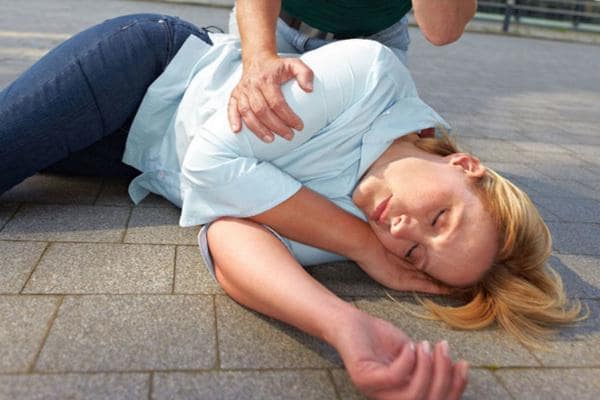A tumor, shortness of breath, shortness of breath, bruising, fainting, palpitations – these may be signs of anaphylactic – allergists warn us.
This is an emergency situation requiring urgent diagnosis and immediate assistance. In this case, the patient is the most important source of information. However, he cannot always say what he is allergic to, and often does not even realize this.
Time matters
Whether it is anaphylactic shock, fainting, trauma or an accident, every second is valuable. You must act quickly and accurately.
– At that moment when we see that something is wrong with another person on the beach, in a restaurant or on the street, we cannot remain passive. You should always stop and try to explain what is happening. Ask what happened if you need help.
Anaphylactic is the most severe type of allergy and causes symptoms of varying severity – from banal to life-threatening. None of them can be underestimated. Edema can block your airways, lower your blood pressure, increase your heart rate, and cause hives. Allergists emphasize that in this case, the speed of action is more important than technology.
Anaphylactic shock – first aid
“We must stop the stimulus that gives the symptoms of anaphylactic.” If there is a sting, then with a piece of paper making a movement, you should immediately remove it from the skin or stop eating food. People jumping into cold water often get anaphylactic. It is also potentially life-threatening; it can even be fatal.
People with allergies often prepare for such an attack and have a pre-filled adrenaline syringe. It is best to inject into the outer surface of the thigh. It is also worth massaging the injection site to speed up its absorption. Injection can also be done through clothes.
– Ask the patient to give him this adrenaline and call an ambulance. Is a well-known number, and in fact, when emotions arise, we cannot remember it. And you must be with this person until the ambulance arrives, that is, qualified medical care that takes care of him,
If professional help does not come fast enough and the patient’s condition worsens, for example, he loses his breath or his blood circulation stops, then cardiopulmonary resuscitation should begin in accordance with the principles of BLS (Basic Life Support).
– We put the patient on his back, see if he breathes, if not, then potentially his heart also stopped beating, and you need to use an indirect heart massage by pressing 100-120 times per minute. If we have a mask, then, of course, we additionally give breath to the victims,
If the patient complains of shortness of breath, then it will be easier for him to lie down, and in case of dizziness, lie with his legs slightly raised.








